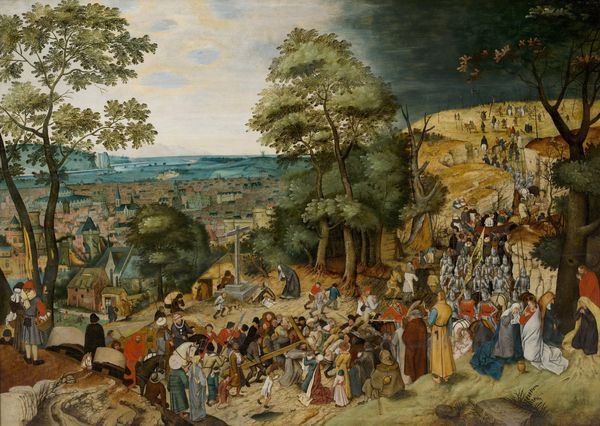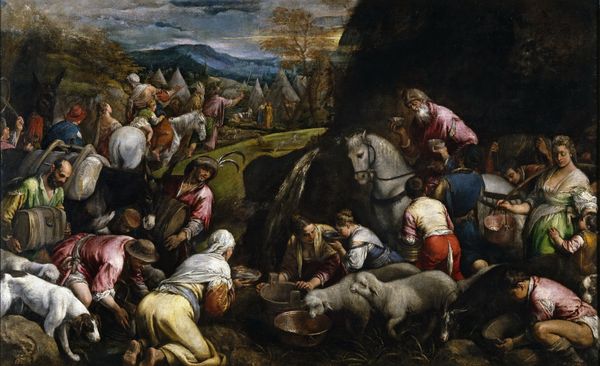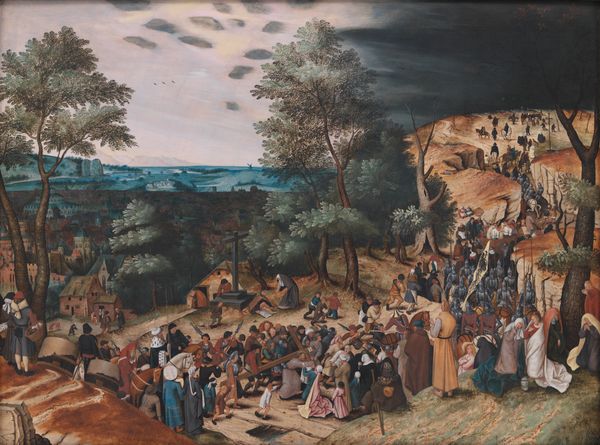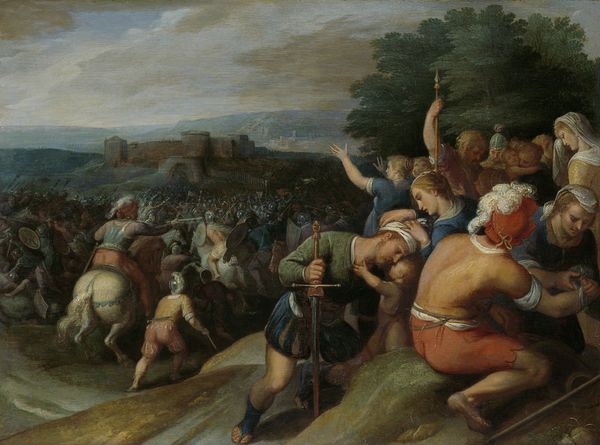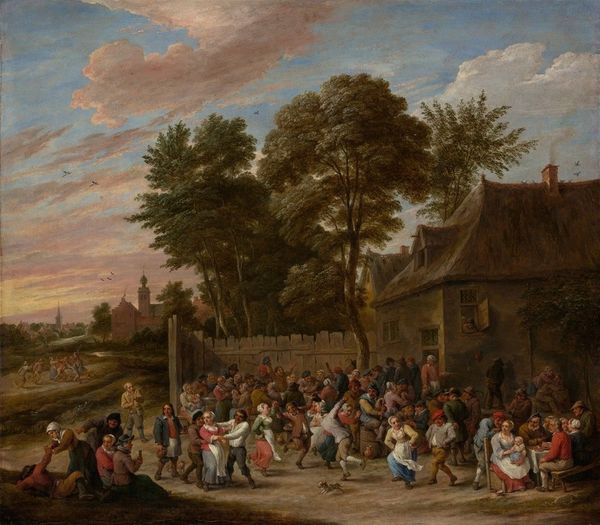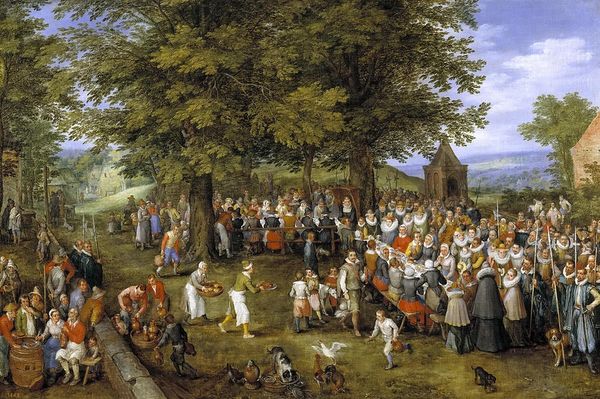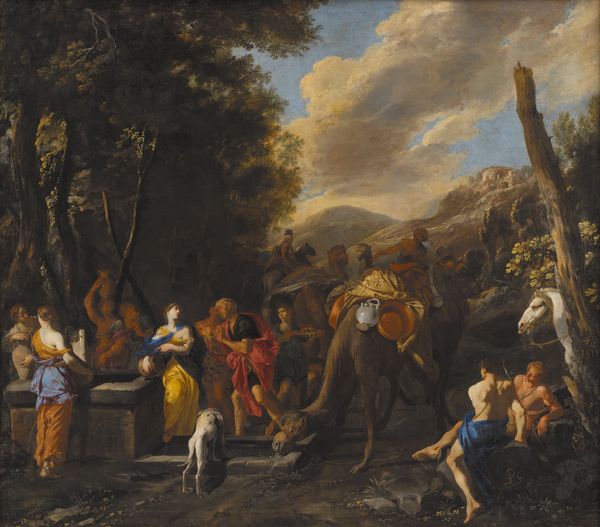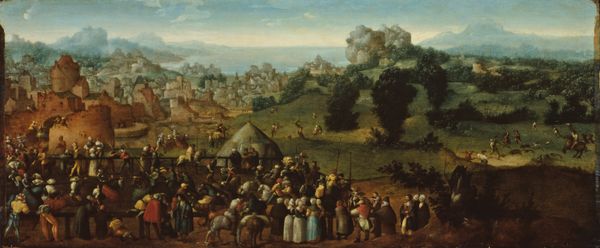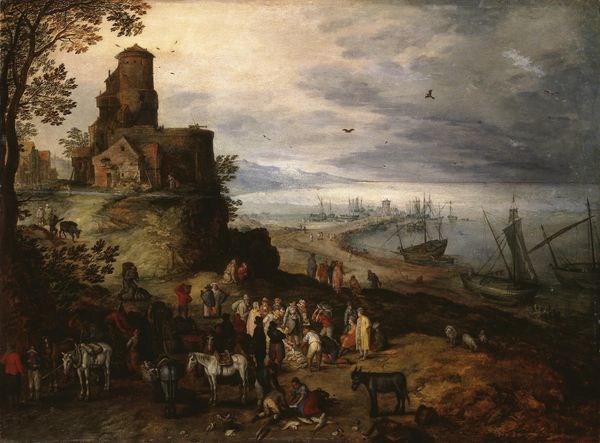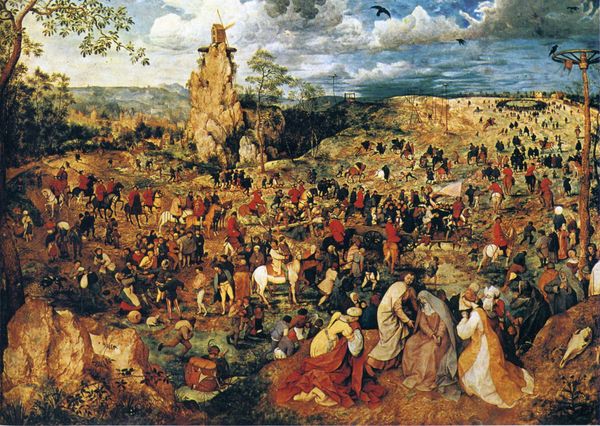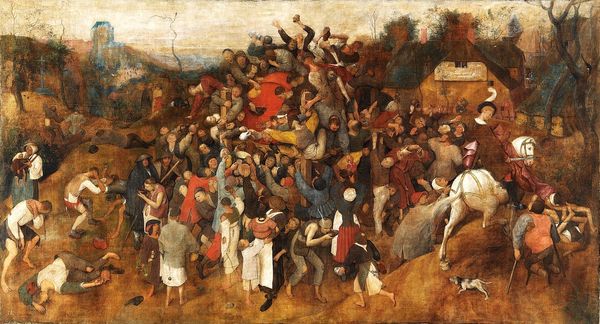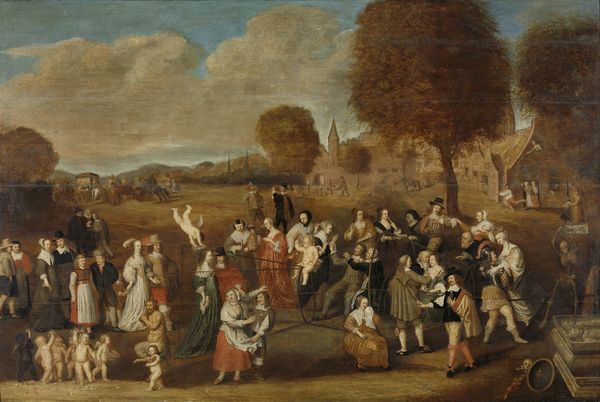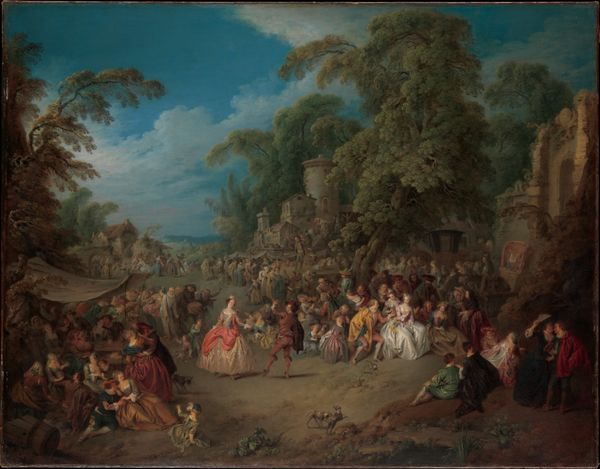
painting, oil-paint
#
allegory
#
painting
#
oil-paint
#
landscape
#
mannerism
#
figuration
#
oil painting
#
history-painting
Dimensions: height 116 cm, width 203 cm
Copyright: Rijks Museum: Open Domain
Curator: Immediately, there is something deeply unsettling about the composition. The churning mass of figures contrasts starkly with the muted greens and browns of the landscape, creating a disharmony that mirrors the painting's thematic unease. Editor: You're right, a disquieting feeling. And that brings us to what this Mannerist oil painting from sometime between 1570 and 1580 actually depicts. Its title is Allegory of Abuses by the Authorities of Church and State, made by Gillis (I) Mostaert. Curator: Mostaert certainly doesn’t pull any punches here. I mean, look at the blatant corruption signaled by those religious figures consorting so closely with figures of worldly power. It’s a searing indictment of the ruling class. The composition isn't just aesthetically jarring; it mirrors the societal disruption caused by their abuses of power. Editor: I find the positioning of the figures remarkable, the way Mostaert uses the serpentine figure and spatial distortion creates a swirling sense of chaos. There's almost a collapse of perspective as the planes intersect with no point of resolution. Do you think this creates tension that reflects moral turmoil? Curator: Absolutely, think about the historical context: The Dutch Revolt was underway during this period, with widespread rebellion against the abuses of Spanish rule, both secular and ecclesiastical. Mostaert’s allegory speaks directly to the experience of the subjugated, with figures who would represent, say, ordinary tradesmen and laborers trampled or taken advantage of. Editor: There is an unsettling lack of hierarchy within the distribution of figures, yet all activity directs to the imposing figure resting on a mount under the cross, above those ostensibly representing church leaders, though engaged in unbecoming pursuits. Is Mostaert implicating something other than simply the "state and church"? Curator: Good question! If we contextualize this work within the Northern Renaissance’s deep engagement with social critique, one could also perceive it as indicting the systems of injustice that permitted inequality between social classes, particularly mercantile versus landowning power. Editor: A nuanced reading, for sure! Thank you for bringing awareness to that reading. The painting almost vibrates with moral outrage. Curator: It’s a stark reminder that art can be a powerful tool for social commentary, capturing moments of societal unrest. Editor: Yes, it is also the result of skillful arrangement of elements, color, form and line for effective storytelling, in this case, that the system is broken.
Comments
No comments
Be the first to comment and join the conversation on the ultimate creative platform.
